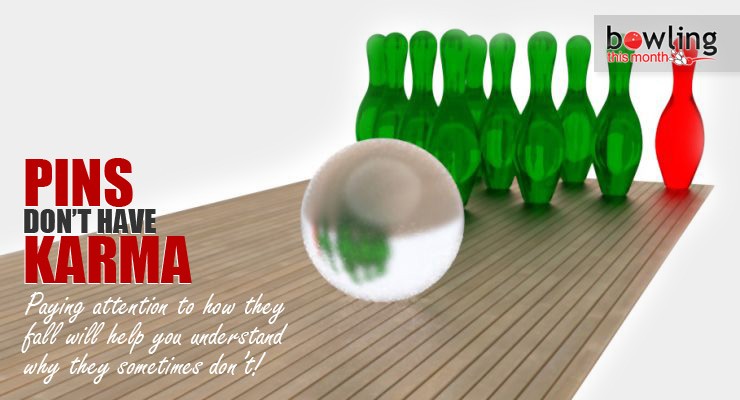The study of pinfall is extremely important. Pins can give you a lot of information. There are times when as soon as you let the ball go, you know it’s probably going to be a 10 pin. (There are also those wonderful times when it surprises you and falls down. They just don’t happen often enough!) If you pay attention, you’ll notice how very often you know what’s going to be standing before it happens. Deep down, we are seldom surprised. We may not be happy with it, but it is not the fault of the pin that it is upright.
There are many things that influence pinfall. The pins need to be lined up properly. The pin deck must be level side to side and is allowed a north-south tolerance of 3/16 of an inch. If the deck is tilted downward from front-to-back, scores will tend to be lower (the ball becomes airborne). If it is tilted upward, scores will be higher (the ball clings to the surface).
The pin deck surface must be properly maintained. It would be nice if the pins were not too old or too new. Pin age is not regulated. The flat gutters must be from 3⅜” to 3⅝” deep. The kickback plates should be lively and resilient; the lane surface smooth and level. The right ball surface with the right core drilled with the right layout needs to have the angle, speed, and rotation the lane requires. Other than that, you can just slop it up there any old way and strike…
The only part of all this you can control is matching the ball and how you ...
Already a premium member? Click here to log in.


